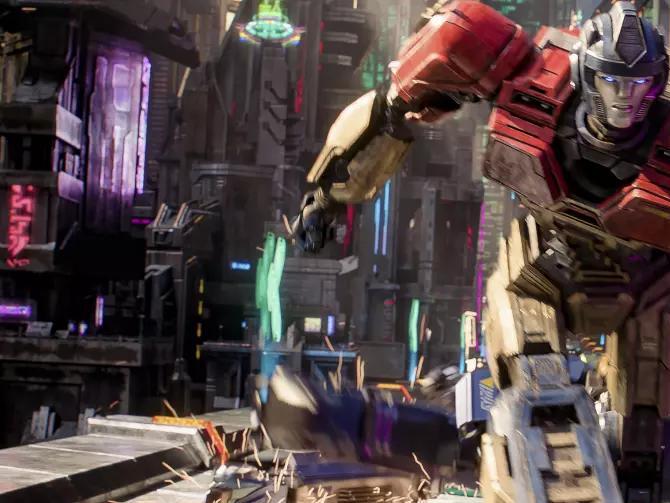Physical Address
304 North Cardinal St.
Dorchester Center, MA 02124
Physical Address
304 North Cardinal St.
Dorchester Center, MA 02124

Animation brings a fresh perspective to a franchise that has struggled with its recent live-action iterations. “Transformers One,” a prequel that re-examines the lore of the iconic alien race known for transforming into vehicles, delves into the origins of the enduring conflict between the noble Autobots and the sinister Decepticons. This film takes viewers back to a time before either faction existed.
The “Transformers” saga, which kicked off in theaters in 2007 under the direction of Michael Bay, has often been criticized for blending live action with a heavy reliance on digital effects. However, this new animated feature, helmed by Oscar-winning director Josh Cooley of “Toy Story 4” fame, crafts a strikingly sleek universe, characterized by its hard and shiny aesthetics, making it feel distinct from narratives involving human characters.
At the heart of the film lies the emotional connection between two robotic friends: Orion Pax, voiced by Chris Hemsworth, a spirited idealist, and D-16, voiced by Brian Tyree Henry, the cautious and skeptical member of the duo. Together, they search for energon, their planet’s vital source of energy, while their charismatic leader, Sentinel Prime (voiced by Jon Hamm), seeks an ancient artifact known as the Matrix of Leadership, which could eliminate the need for energon extraction.
Orion Pax and D-16 are born without the ability to transform—a distinction that relegates many robotic beings to menial labor roles. Their desire for more pushes them to break societal rules and embark on a self-directed journey to discover the Matrix of Leadership. While “Transformers” movies are rarely associated with class commentary, this film boldly questions why power structures exploit the masses, revealing a deeper ideological split that eventually splinters Optimus Prime from Megatron.
This film’s narrative benefits from lowered expectations stemming from its predecessors, yet it also showcases the talent of its trio of writers—Andrew Barrer, Gabriel Ferrari, and Eric Pearson—who have crafted a humorous script filled with clever banter and jokes that resonate well with the audience. The script is refreshingly daring at times, testing the boundaries of humor suitable for a younger demographic. Moreover, the gravity of Orion and D-16’s friendship lends emotional weight that makes their eventual separation feel poignant and justified.
Visually, “Transformers One” stands out through its impressive textures, a result of the adept use of 3DCG animation. While the original 1980s hand-drawn series holds a nostalgic charm, this animated rendition brings a tangibility to the Transformers that enhances viewer engagement.
These metallic beings, resembling reflective objects, necessitate expert handling of light interaction, physical impact, and the dynamics of their high-speed confrontations, whether during a thrilling train chase or a race. The animation team skillfully portrays how these characters respond to various stimuli, ensuring that the action sequences are both exhilarating and realistic.
Joining Orion Pax are a diverse set of characters, including the stern Elita-1, voiced by Scarlett Johansson, and the upbeat B-127, portrayed by Keegan-Michael Key. B-127 delivers some of the film’s best comedic moments, cleverly commenting on his desolate existence and the imaginary companions he’s created to stave off loneliness. The unique designs of Orion’s crew stand out against their harsh environments, which blend towering, brutalist structures with dystopian landscapes, creating a visually cohesive experience.
When compared to other franchise continuations, “Transformers One” emerges as one of the year’s most delightful surprises. Its narrative even takes on elements of biblical significance, as the inhabitants of Cybertron confront the truths defined by false prophets. Despite its mainstream appeal and conventional plot structure grounded in the saga’s established mythology, the film offers a layer of character motivation and depth that is often absent in many typical Hollywood productions. Animation, in this case, serves as a transformative medium, revitalizing familiar tales with new insight and emotional resonance.
Source: Los Angeles Times



